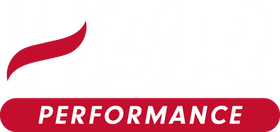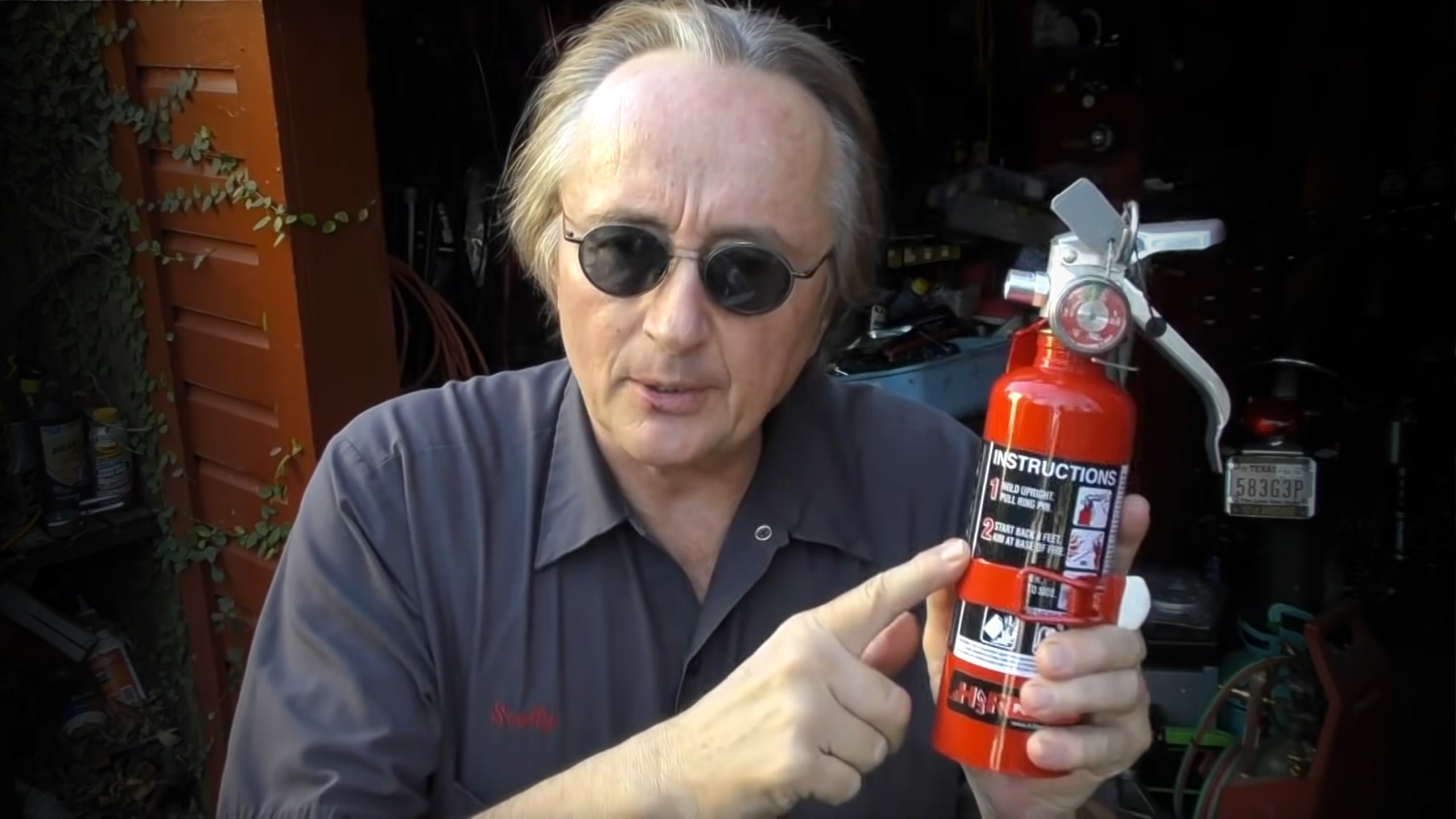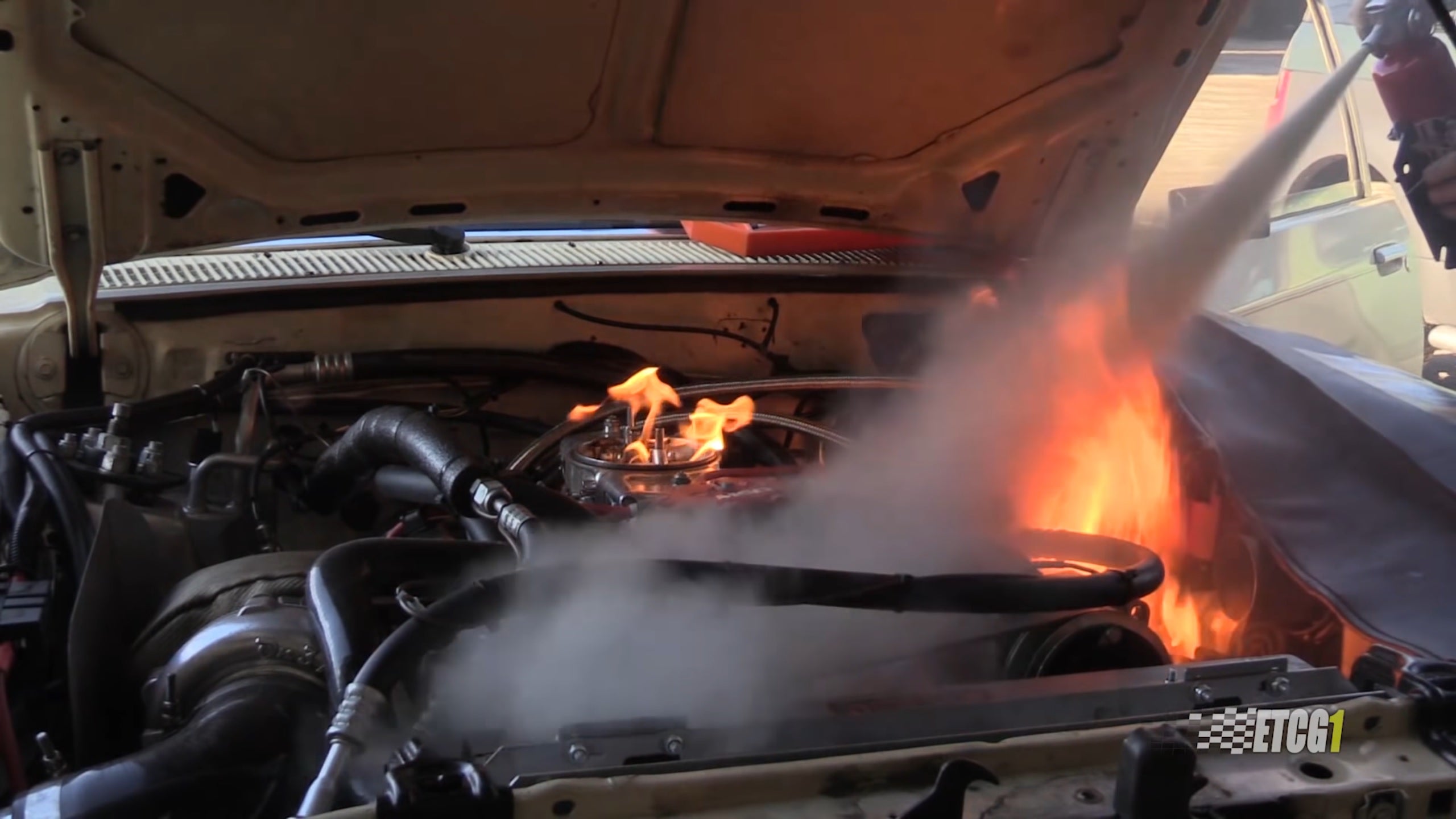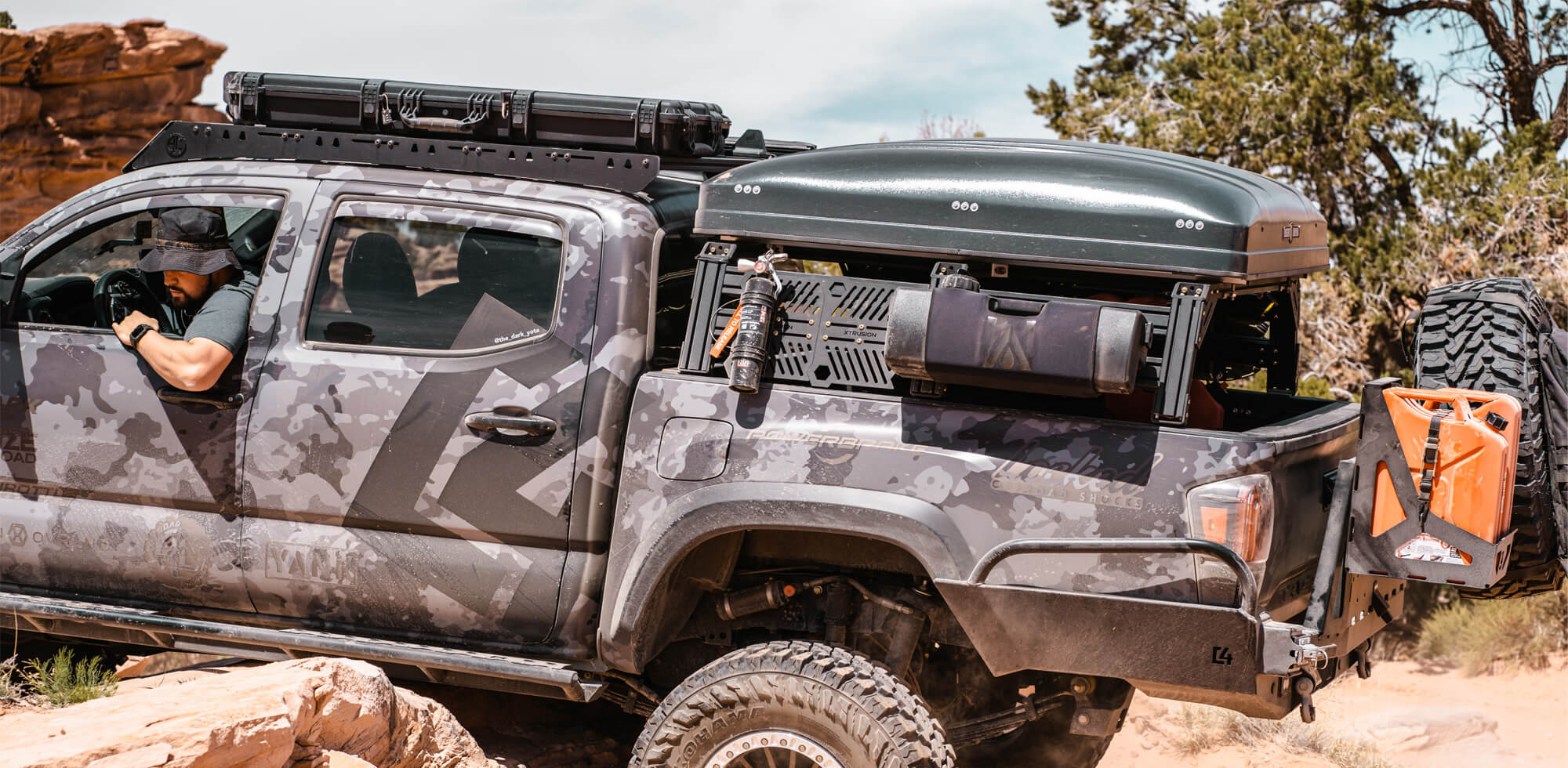Mounting Fire Extinguishers from H3R Performance
Trail4R.com/Frank Rebelo | Dec 6, 2018

WHAT TO LOOK FOR WHEN BUYING A FIRE EXTINGUISHER WITH THE H3R PERFORMANCE LINEUP
Too often, one of the most overlooked items when kitting out your expedition rig is a good quality fire extinguisher. With various hazards, either vehicle-based or around camp, a fire extinguisher is a must-have safety item.
Nothing will ruin a trip more than watching your rig burn to the ground, or worse be the beginnings of a wildfire. Just last year, in 2017, 88% of wildfires were caused by humans. A quality fire extinguisher is an investment into the safety of your life, your truck, or those in need that you might find on the trail.
When shopping for a fire extinguisher to add to my vehicle, I chose two 2.5 lb. units from H3R Performance, a MaxOut™, and a HalGuard™. A high-quality product with metal used for key components, backed by wonderful customer service, based right here in Northern California.
- Check out their website: h3rperformance.com
H3R PERFORMANCE – MAXOUT™ MX250R

Where to buy?
- MaxOut Fire Extinguisher: Check Price
- Quick Release Brackets Pictured: Check Price
H3R PERFORMANCE – HALGUARD™ HG250B

Where to buy?
- HalGuard Fire Extinguisher: Check Price
- Universal Seat Brackets Pictured: Check Price
Use discount code “TRAIL10” for 10% off the H3R Performance Fire Extinguishers and mounting accessories on h3rperformance.com.
HOW TO READ FIRE EXTINGUISHER RATINGS

Let’s break it down, what all these symbols mean, the purpose of each, and why.
- Class A: Ordinary Combustibles: Wood, paper, cloth, trash, and other ordinary materials. Water extinguishers or APW (air-pressurized water) are only suitable for class A fires.
- Class B: Flammable Liquids & Gases: Gasoline, oils, paint, lacquer and tar.
- Class C: Fires Involving Live Electrical Equipment. Such as appliances, wiring, circuit breakers, and outlets.
- Class D: Combustible Metals or Combustible Metal Alloys. Typically found in chemical laboratories.
- Class K: Fires in Cooking Appliances That involve cooking media: Animal or vegetable oils and fats
Ratings are described using numbers preceding the class letter.
Let’s use a 2.5 lb. MaxOut for example. It has an approved UL rating of 1A:10B:C.
The “A” rating is a water equivalency rating. 1A is equivalent to 1 1/4 gallons of water for Class A fires.
The number predicating Class B rating indicates the size of the fire in square feet that an ordinary user should be able to extinguish. So a 10B equates to 10 square feet of coverage.
There is no predicating numerical rating for class C, as it only indicates that the extinguishing agent will not conduct electricity.
WHAT TO LOOK FOR WHEN PURCHASING A FIRE EXTINGUISHER
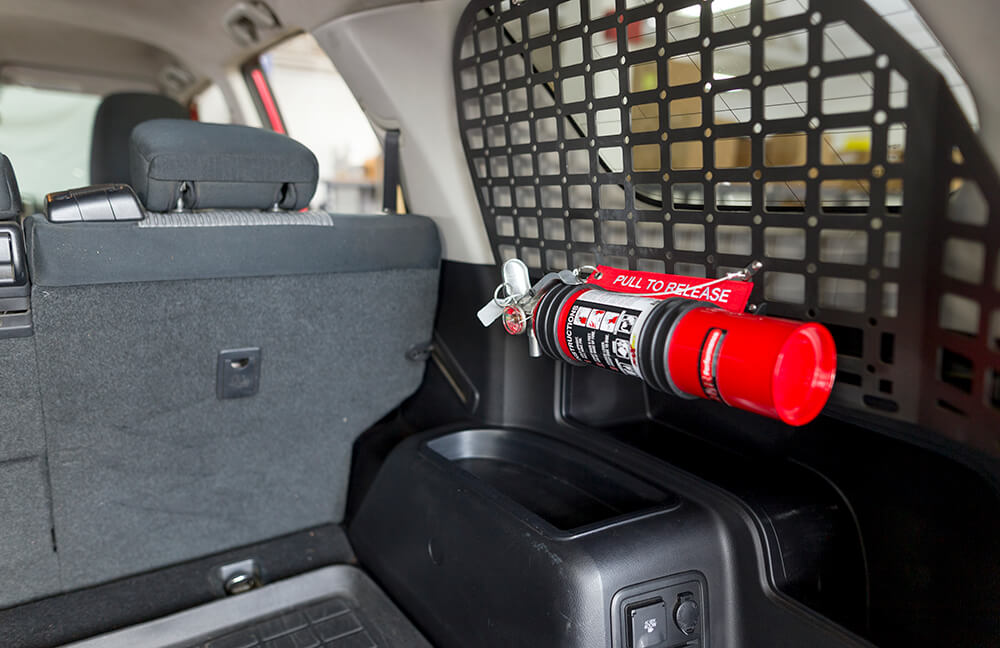
#1 – UL RATING
Double check that your fire extinguisher contains a UL rating. The Underwriters Laboratories (UL) is a renowned third-party testing facility for public safety. A UL rating ensures that an extinguisher design has been subjected to standardized, uniform tests and has met minimum performance requirements covering such things as discharge time and discharge range. It is illegal to sell a non-UL listed fire extinguisher in many states.
Some non-UL listed products purport to be superior due to longer discharge times than the typical 9-12 second discharge time of a typical UL listed fire extinguisher. However, a longer duration is not indicative of the size of a fire it can extinguish.
#2 – EXTINGUISHING AGENT USED: DRY CHEMICAL VS. CLEAN AGENT
MaxOut™ (Dry Chemical):
- Very good effectiveness (2.5 lb. achieves a 1A:10B:C rating)
- Does not cause thermal shock or static shock when discharged
- Potential damage to surface finishes and electrical components
- Requires immediate cleanup
HalGuard™ (Halotron 1 Clean Agent):
- Good effectiveness (2.5 lb. achieves 2B:C rating)
- Does not cause thermal shock or static shock when discharged
- Does not leave a corrosive residue
- Maintains good user visibility during discharge
- Attacks fire in hard-to-reach areas
#3 – SIZE OF THE UNIT
- 1 lb. – Ideal for small fires, convenient to mount in small areas
- 2.5 lb. – Ideal size for car fires
- 5 lb. – Ideal choice for RV’s, garages, trailers, or pits
#4 – METAL VS. PLASTIC
Fire extinguishers with plastic components tend to degrade over time, and could fail. Having an extinguisher with you is better than not, it isn’t worth the risk if that low-quality extinguisher were to fail, which can happen (CPSC Kidde Recall).
Having a quality made extinguisher with metal for key components (i.e. handle, nozzle, valve, siphon tube, bracket), although more expensive, could be the difference between your rig burning to the ground or not.
In addition, these extinguishers are typically refillable and can be reused.
#5 – MOUNTING POINT
An unmounted extinguisher is a recipe for disaster.
During a rollover or crash, and unmounted extinguisher can become a projectile within your vehicle.
Choose a location where it can be easily accessible, without the potential for being covered by your gear.
TIP: LOAD VS DURATION
The ability of an extinguisher to put out a fire is closely related to the load that it can expel. For example, a 10 lb. with a 9 second discharge time can put out a larger fire than a 1 lb. extinguisher with a 9 second discharge time.
This is due to more agent being expelled during the same discharge time. Something very important to keep in mind is what different brands quote.
For example; “Brand X” claims to have a long duration to suppress a fire. Imagine blowing out the candles on your birthday cake, which will be more effective? One large blow? Or slowly blowing the same amount of air?
MOUNTING FIRE EXTINGUISHER UNDER SEAT

Mounted under my driver’s seat is an H3R Performance 2.5 lb. HalGuard™ with their black Universal Seat Mount. If a fire were to appear under the dash, inside the main cabin, or within an engine bay.
It would have it readily available on my driver’s seat. One of the main benefits of having HalGuard™ is that it is a clean agent extinguisher.
It would not leave a corrosive residue on any finishes or do damage to my electrical system.
FIRE EXTINGUISHER ON THE MOLLE PANEL

To make sure all my bases are covered, in the rear of my vehicle is a MaxOut™ 2.5 lb. unit. MaxOut™ is a dry chemical type, very good at extinguishing Class B and C fires as well as Class A.
The intended use for this rear extinguisher would be for small fires outside of my vehicle, or at my campsite. A backup unit to the 2.5 lb. HalGuard™ in the vehicle.
EXTINGUISHING A CAR FIRE
- Stop the vehicle. Put it in park.
- Get passengers out of the vehicle. Have a passenger or bystander call 9-1-1
- Locate, remove extinguisher. Pull pin, and aim towards the base of the fire, squeeze handles together and sweep from side to side. Move closer but not too close as to scatter the burning material or liquid.
- If a fire is in the engine bay, pop the latch, but do not open fully. Aim the nozzle into the engine under the hood before opening fully. Opening the hood has the potential to make it worse.
- When the fire is out, back away and watch for possible re-ignition
